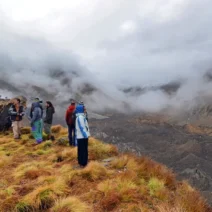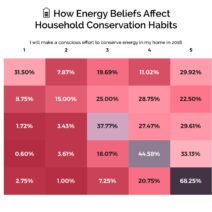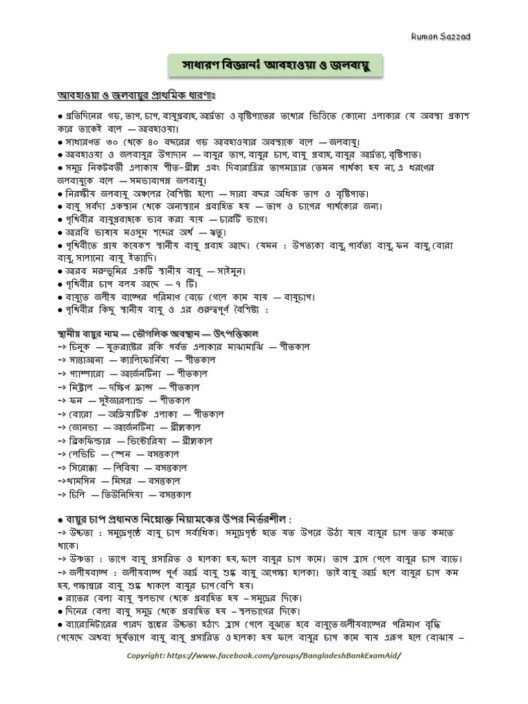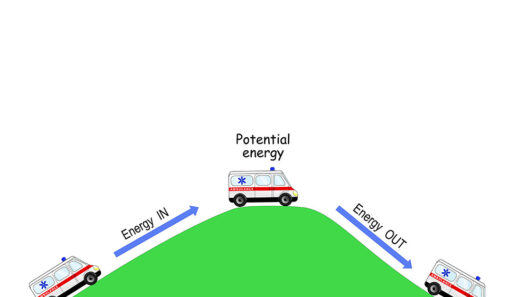Energy conservation is an essential principle of physics that governs the behavior of countless systems. The adage “energy cannot be created or destroyed; it can only be transformed” encapsulates this fundamental concept. This principle does not merely apply to theoretical physics; it permeates various disciplines including engineering, environmental science, and daily life. Understanding how to solve and set up energy conservation problems can illuminate the intricate dance of energy transformations, prompting observers to explore deeper implications on efficiency and sustainability.
Understanding the Conservation of Energy Principle
At its core, the conservation of energy asserts that the total energy in an isolated system remains constant. This law challenges us to examine how energy shifts from one form to another—be it kinetic energy (energy of motion), potential energy (stored energy), or thermal energy (heat). For instance, consider a roller coaster: it converts gravitational potential energy at its peak into kinetic energy as it descends. An analysis reveals how energy transitions contribute to motion, offering profound insights into both design and safety.
At the molecular level, energy conservation is equally intriguing. Chemical reactions often illustrate this phenomenon vividly, as reactants undergo transformation while fulfilling energy equations. The complex interplay of bonds and energy can reveal much about sustainability within industrial processes, highlighting pathways for reducing waste and optimizing resource usage.
Setting Up Energy Conservation Problems
When attempting to set up energy conservation problems, one must first clearly define the system in question. Identifying the boundaries is paramount. For example, in a closed pendulum system, the energies being examined include kinetic and potential energy. Visualize a pendulum at its highest point—potential energy is maximized and kinetic energy is minimal. As it swings downward, potential energy diminishes while kinetic energy escalates, illustrating energy’s seamless flow.
Next, establishing the equations governing the energies involved is crucial. The potential energy (PE) can be calculated using the formula: PE = mgh, wherein ( m ) signifies mass, ( g ) represents acceleration due to gravity, and ( h ) is the height above a reference level. Simultaneously, kinetic energy (KE) is described by the equation: KE = 1/2 mv², where ( v ) is the velocity of the object. Aligning these equations facilitates comprehensive problem-solving approaches, allowing for the isolation and analysis of variables.
Furthermore, it is essential to consider energy losses, primarily due to friction, sound, and other non-conservative forces. Frequently, real-world systems are subject to these dissipative processes, providing an opportunity to evaluate efficiency. Sometimes, loss could represent an opportunity—transforming wasted thermal energy into usable power via innovative technologies. This approach not only improves efficiency but also further captivates the environmental discourse surrounding sustainability and conservation.
Common Scenarios in Energy Conservation
Numerous scenarios effectively illustrate the application of energy conservation principles. Sports enthusiasts will appreciate how kinetic energy is harnessed in various athletic endeavors. For instance, a diver springs off a platform, converting muscular energy into kinetic and then gravitational potential as they ascend. The intricate calculations involved in estimating their trajectory also enhance our understanding of fluid dynamics—a dedication equally important to sports science and ecological modeling.
Another classic example is found in renewable energy systems. Wind turbines elegantly exemplify energy conservation at play. Wind transforms kinetic energy into mechanical energy, which is subsequently converted into electrical energy powering homes and cities. Examining this transformation invites deeper reflection on sustainable energy sources and their role in combating climate change. Engaging with the mathematics behind such systems can facilitate an understanding of their feasibility and efficiency.
Embracing Modern Technologies in Energy Conservation
Advancements in technology have demonstrated significant potentials for refining energy conservation methods, making it a ripe field for innovation. Consider the recent developments in smart grid technology: these systems intelligently manage electricity flow, optimizing usage according to demand. This capability melds traditional energy conservation principles with cutting-edge technology, creating a synergistic relationship that fosters sustainability.
Moreover, the integration of energy storage systems such as batteries can revolutionize how energy is conserved and distributed. Utilizing excess energy generated during low-demand periods and deploying it during peaks can alleviate stress on the grid while enhancing overall efficiency. This seamless crossover between theoretical concepts and practical applications underscores the importance of energy conservation strategies for future infrastructure planning.
Conclusion
Grasping the concept of energy conservation transcends mere calculation; it invites a profound appreciation for the interconnectedness of systems around us. By mastering techniques for solving and setting up energy conservation problems, one uncovers the elegance inherent in nature’s laws. From the simplicity of a pendulum to the technological complexities of smart grids, energy conservation requires an integrative approach combining physics, engineering, and environmental ethics.
Ultimately, our engagement with energy conservation is not just an academic exercise; it influences our approach to pressing global challenges. As our society navigates the complexities of climate change and resource scarcity, embracing energy conservation principles emerges as a necessity. By fostering a deeper understanding of how energy interacts within our world, we stimulate a collective movement towards greater efficiency, sustainability, and conscientious resource management.







